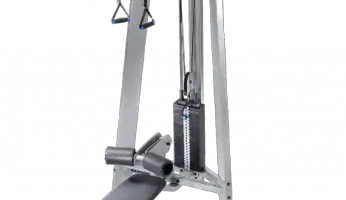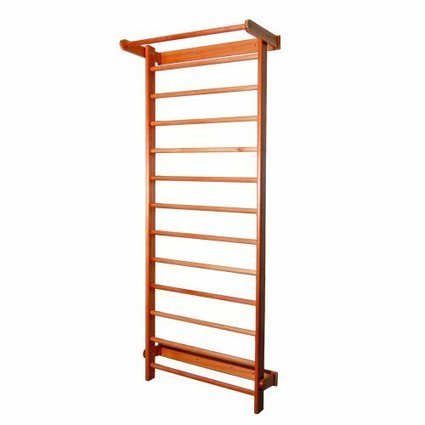The Dumbbell Deadlift – How, Why & WHEN To Add it to Your Routine
updated January 1, 2019
When was the last time anyone asked you how much you can dumbbell deadlift?
Probably never.
The dumbbell has always been the little brother to the barbell. As a result, we usually focus exclusively on barbell training for the big moves. However, when it comes to the master of upper body moves, the deadlift, the dumbbell version can add a lot to your training program. How to do deadlifts with dumbbells? In this article, we examine the hows, whys, and when of the dumbbell deadlift.
Quick NavigationDumbbell Deadlift AdvantagesTrains Each Side IndividuallyBetter ErgonomicsUnilateral TrainingEasier Set-UpFormStabilizersWhat Muscles Are Worked by the Dumbbell Deadlift? Should You Use the Dumbbell Deadlift to Replace the Barbell Version? So, When Should You Do the Dumbbell Version? How to Perform the Dumbbell DeadliftThe Bottom Line
Dumbbell Deadlift Advantages
Trains Each Side Individually
Dumbbells stress the body evenly. Although a barbell is far superior to using a Smith Machine, you are still holding a single object with both hands. As a result, the stronger side will always dominate to a certain extent. But, when you are using two dumbbells, the weaker side will be subjected to the same weight as the stronger side. Over time, dumbbells will always do a better job of correcting muscle imbalances.
Better Ergonomics

Dumbbells will always offer a more excellent range of motion than a barbell. When it comes to the deadlift, however, they offer some extra vital advantages. When it comes to the barbell deadlift, your positioning options as far as the weight goes are pretty limited. The bar needs to be in front of your body (unless you are using a trap bar) and your hands have no choice but to be in a forward position.
When you switch to the dumbbell, however, notice that your hands are now alongside, rather than in front of, your body. Also, as opposed to a pronated grip, you now have a neutral grip where your palms are facing toward each other. It changes the center of gravity of the exercise and makes it easier on the lower back.
Unilateral Training
Dumbbells are great for unilateral training. It is ideal if you want to do a few extra sets and concentrate better on the target muscles. You may even realize a physiological benefit with unilateral training. Scientists have determined that when you train both sides at the same time, the brain has to split the nerve impulse. When you train each side separately, however, the entire nerve impulse is directed just one way. It may lead to better overall muscle contraction.
Easier Set-Up
To perform the Dumbbell deadlift, you have to grab the dumbbells, and you’re set to go. With the barbell version, however, you need to spend quite a bit of time setting up the bar and the weights. You also need a lot more space in which to training than when using dumbbells.
Form

To correctly perform the barbell deadlift, you have to follow strict form. Improper form can have serious consequences, especially about the spine. The dumbbell version is a lot more forgiving, though it’s still not a good idea to use the bad form on it!
Stabilizers
When you use dumbbells, you use a lot of stabilizer muscles that are required for balancing each of the weights. When you’re talking about an exercise that works the entire body like the dumbbell deadlift, that means that a whole lot of muscle recruitment is taking place. They don’t get activated to anywhere near the same degree when you’re doing the exercise with a barbell.
Interested in learning about Jefferson deadlift? Read this article to learn more.
What Muscles Are Worked by the Dumbbell Deadlift?
Even though you are doing essentially the same movement as you would with a barbell, the dumbbell deadlift does work your muscles differently to the barbell version. For one thing, you will not be able to lift as much weight with dumbbells as you would with a barbell. That has a lot to do with your grip. Holding two dumbbells is a lot harder than holding a single barbell, even if the overall weight is the same. It also comes down to the simple fact that, when your strength level goes up, you will struggle in most gyms to find dumbbell weights to match the amount of weight you can use on the bar.
The dumbbell version of the deadlift places more focus on the glutes than the barbell version of the exercise. The glutes maintain a straight back and extend your glutes. To ensure that they are fully activated, be sure to keep the dumbbell lined up with your heels and sit back as you descend.
The hamstrings work in concert with your glutes to provide the power of your ascent. It’s no surprise, then, that the dumbbell version of the deadlift also hits your hammies more than using a barbell. Performing straight-legged deadlifts will engage your hamstrings to an even higher degree.
As already mentioned, it is harder to maintain your grip on the dumbbell deadlift. It can, however, be a good thing. It will help you to develop the strength of your grip and the size of your forearms a lot more than the barbell deadlift will do. On the downside, you won’t be able to lift as heavy as you can with the bar, and your reps may fail sooner than your target muscles give out. You can, of course, use lifting straps to help you to maintain your grip for longer.
The dumbbell deadlift will also activate the muscles of your core better than you would get with the barbell deadlift. When you are pulling the weight up from a position in line with your heels, it takes a greater level of effort to keep your torso upright and your back in a neutral position. It allows you to more effectively work the transverse abdominous, the multifidus, and the pelvic floor.
Should You Use the Dumbbell Deadlift to Replace the Barbell Version?
In most cases, the answer to this question is a definite no. The barbell deadlift is (along with the squat) one of the two most beneficial things you can do in the gym to pack on muscle mass and get strong. The fact that you can lift more weight than when using dumbbells makes a big difference.
In most gyms, the max dumbbell weight is one hundred pounds. That gives you a two hundred pound total possible deadlift weight. Then you’ve got to get those weights into position. When you’re using a bar, however, you can load up that bar to whatever you need which will probably be exceeding 200 pounds before too long.
The exceptions to not using dumbbells exclusively for the deadlift are if you do not have access to a barbell or don’t have enough weight to go heavy enough. Also, if you have an existing lower back injury that prevents you from doing the barbell deadlift, you will find that the dumbbell deadlift will be better for you. In all other cases, the barbell deadlift should remain a mainstay of your training.
So, When Should You Do the Dumbbell Version?
The dumbbell version of the deadlift should be considered an auxiliary exercise rather than a replacement for the barbell deadlift. Use it when you want to place the focus on working your glutes and hamstrings. The dumbbell deadlift can also be a great stepping stone exercise to the barbell deadlift. It can help you to perfect your form before you move on to the heavier weights with the barbell version.
If you are wanting to do stability training or need to balance out your strength levels, you will find that the dumbbell deadlift is a great way to do it. The dumbbell version is also suitable for developing your grip strength, as well as for higher rep metabolic training.
How to Perform the Dumbbell Deadlift
- Stand with a pair of dumbbells in your hands. Your feet should be shoulder width apart, and your palms should be facing towards your body. Angle your feet slightly outwards. The dumbbells should be hanging naturally at your sides ( do not try to emulate the position of the bar in a barbell deadlift.
- Keep your shoulder blades pinched to ensure that your core is nice and tight. You should also keep your chest up and ensure that your heels are under your hips at all times. Now lower down to the starting position with the dumbbells on the floor. You should be in a full squat position with your hips nice and deep.
- Breathe out as you push through the hips to drive up to a standing position. Push the hips forward as you come up and keep the shoulder blades pinched.
The Bottom Line
The dumbbell deadlift should be considered an adjunct to the barbell version, which is and always will be the king of upper body exercises. If you are after raw mass and power, you MUST be barbell deadlifting. The dumbbell version is a useful training tool to prepare you for heavy barbell deadlifting (it can do the same thing for squats). It is also a great way to target your hamstrings and glutes. Also, the dumbbell deadlift is a better option for people who have an existing back injury, as it is safer to perform than the barbell deadlift .











